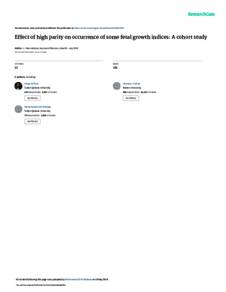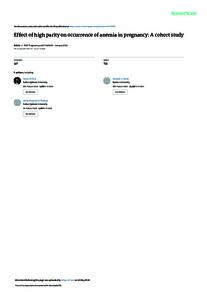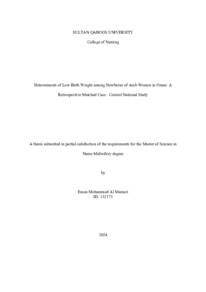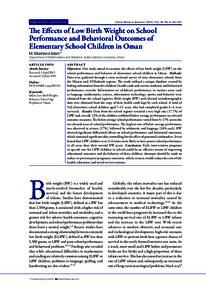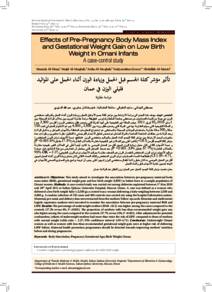وثيقة
Effect of high parity on occurrence of some fetal growth indices : a cohort study.
المعرف
DOI: 10.2147/ijwh.s32190
المساهمون
Brooks, Daniel R., مؤلف
Werler, Martha M., مؤلف
Cabral, Howard J., مؤلف
Al-Shafaee, Mohammed A., مؤلف
Wallenburg, Henk C., مؤلف
الناشر
Dove Medical Press.
ميلادي
2012-07
اللغة
الأنجليزية
الملخص الإنجليزي
The objective of this retrospective cohort study was to explore the potential causal relation between parity and fetal growth indices, including low birth weight (LBW), macrosomia, and prematurity. The study was nested on a community trial in a city in Oman. The study analyzed 1939 pregnancies among 479 participants. Of these, 944 pregnancies (48.7%) were high parity (≥5). Obtained newborns with outcomes of interest were as follows: 191 LBW, 34 macrosomic, and 69 premature. Associations were measured using multilevel logistic regression modeling. Compared to low parity (LP, defined as <5), high parity was found to be associated with less risk of LBW (relative risk [RR] = 0.76; 95% confidence interval [CI]: 0.44-1.1) and prematurity (RR = 0.82; 95% CI: 0.54-1.27), but greater risk of macrosomia (RR = 1.8; 95% CI: 1.2-2.4). This study provides evidence that with increasing parity, risks of LBW and prematurity decrease, while risk of macrosomia increases.
المجموعة
ISSN
1179-1411
URL المصدر
قالب العنصر
مقالات الدوريات

